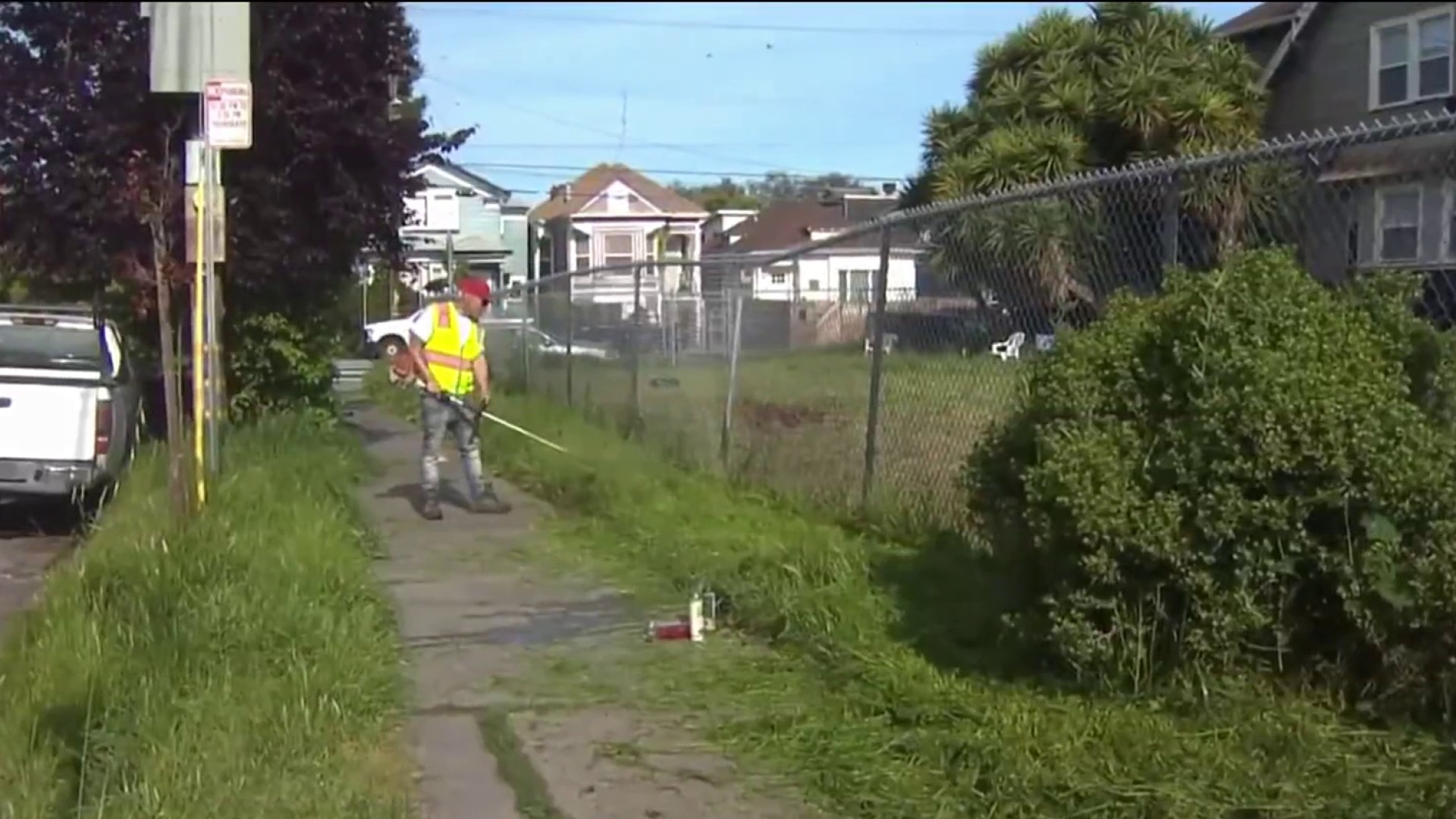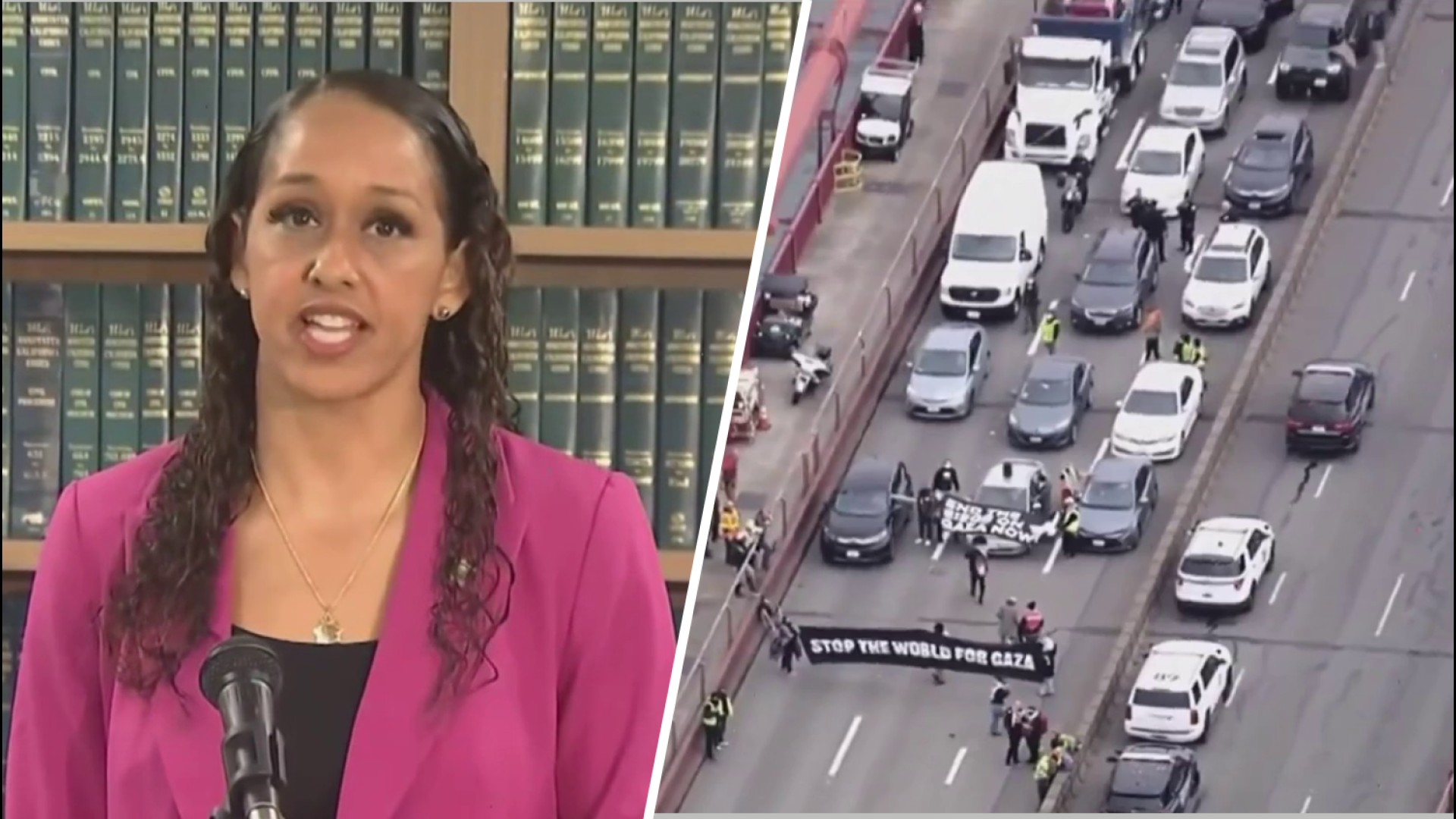When 73-year-old Randal Parker first moved to East Palo Alto with his family in 1952, he remembers open fields of agricultural land, a diverse and thriving working-class community and job opportunities for people of color.
Having made the decision to relocate from a small Oklahoma town, with a brief stay in San Francisco's Fillmore District, Parker's mother found steady work at a local hospital as a housekeeper, eventually joining the secretarial pool and then landing a position in management.
Her salary at the time allowed her to put $800 down on a $19,000 three- bedroom house.
For years it was the Parker Family anchor, a gathering place for extended family and friends where holiday and birthday celebrations rolled through with the seasons.
"My mother's house was where everybody came for Thanksgiving and Christmas dinner," Parker said.
Soon, however, things began unraveling for the Parkers and the entire East Palo Alto community as successive waves of drugs and crime rampaged through the streets, punctuated by the drug culture of the 1960s, the crack cocaine epidemic of the 1980s and the lingering gang violence of successive generations, Parker said.
"It was a melting pot, a real melting pot. Everybody got along, no problem," he said. "Then the Haight and Ashbury mess came through, with the drugs, and boom, that started changing this community."
Local
"Then the 'murder capital' years came in - that was the crack boom," Parker said.
After his mother died and Parker, who has spent roughly 50 years behind bars on various assault-related charges, was put away again, the house went up for foreclosure in 1991, he said.
When he was finally released in 2007, Parker was able to work various jobs helping formerly incarcerated people make the transition to post-prison life but an illness curtailed that career and he eventually found himself living in an RV back on the streets of East Palo Alto, where he could no longer afford a roof over his head.
"They were harassing us, we couldn't park anywhere in the neighborhoods," Parker said of himself and a handful of fellow RV dwellers whom he befriended. "It was rough. It was cold that winter, rainy."
Parker was also the victim of a nasty hit-and-run accident that left him with severe injuries and, unable to work, a reliance on monthly disability checks to survive.
While an extreme example, Parker's story in many ways mirrors that of many East Palo Alto residents, for whom skyrocketing housing prices, a historical lack of economic, educational and health care opportunities - sometimes coupled with personal misfortunes and missteps - have created seemingly insurmountable barriers to accessing the benefits of Silicon Valley's tech boom.
The city, nestled in the heart of one of the world's most dynamic economic engines, has long been a pocket of persistent segregation and inequality bracketed by many of the country's most affluent communities.
By most measures, East Palo Alto lags drastically behind neighboring Palo Alto and Menlo Park in economic and quality-of-life metrics, including income potential, educational attainment and business ownership.
For example, East Palo Alto's median earnings for full-time workers was about $33,500 in 2015, while Palo Alto's was roughly $119,000, according to data from Bay Area Equity Atlas.
And while that represents an increase of about $11,000 for Palo Alto workers since 2000, East Palo Alto workers saw a roughly $4,600 decline in earnings during that same period, according to the Bay Area Equity Atlas, a project created by PolicyLink, the University of Southern California's Program for Environmental and Regional Equity and the San Francisco Foundation that seeks to quantify racial and economic inequality throughout the region.
By measures of community vulnerability, the city ranks well above those two Silicon Valley powerhouses, including in linguistic isolation, housing burden and gentrification risk.
For example, while 90 percent of low-income East Palo Altoans lived in gentrifying neighborhoods in 2015, the same could be said of just 28 percent of low-income Menlo Park residents.
Despite the fact that taken as a whole Menlo Park's low-income population is far less likely to face the pressures of gentrification, the city's low-income African American households are disproportionately shouldering that burden, with 84 percent living in gentrifying neighborhoods in 2015, while just 3 percent of low-income white households were similarly affected, according to the Bay Area Equity Atlas data.
"Because of the makeup of our community - primarily low income, majority minority, primarily Latinos and black - we're kind of a working-class community in the midst of very wealthy communities like Palo Alto and Menlo Park," said long-time East Palo Alto resident and City Councilman Ruben Abrica.
Due to the intractable reality of its geography and the relentless waves of Silicon Valley's boom and bust cycles, Abrica says East Palo Alto is particularly vulnerable to gentrification pressures as new workers - primarily young, well-paid tech professionals - migrate to the region in search of housing.
And while the city's rents are on par with those of the entire nine-county Bay Area, they're still much more attractive than their closest neighbors.
For example, from 2011 to 2017, while the estimated median monthly rent in East Palo Alto rose roughly $1,300 to $3,509, rents in Palo Alto grew by almost $2,300 to $6,115, according to the Equity Atlas.
During that same period, the estimated median rent in Menlo Park grew from $3,736 to $5,249 between 2011 and 2017.
"This wave of gentrification feels more aggressive," Abrica said.
"In the '70s and '80s there was a wave of gentrification but this is absolutely magnified 100 times, and I think that Silicon Valley has exploded and created these two parallel societies, where the people at the top benefit a lot and the people at the bottom do not, and we're at the bottom."
Abrica likens the situation to living in a "semi-feudal" society.
"We call it gentrification on steroids," said Paul Bains, senior pastor of East Palo Alto's Saint Samuel Church and founder of Project WeHope, which provides homeless services and job training to people in San Mateo and Santa Clara counties.
"When they're building million-dollar homes right next to a homeless shelter, that tells you what time of day it is," Bains said.
"Now when I'm going up and down the street I see Asians and Caucasians running and jogging," Bains said. "That's not a negative thing. The negative piece is that the very people, the very fabric of this community, the people of color who have lived here all their lives are being forced out."
Bains said the city was particularly hard hit by the 2008 housing market crash and subsequent foreclosure crisis, when outside investors were able to snap up homes for pennies on the dollar.
Many residents were displaced during that period and in 2011, San Mateo County estimated East Palo Alto's homeless population at nearly 400 people - in a city that according to U.S. Census Bureau data was home to roughly 28,000 residents.
"The forces of gentrification are so intense, they are hard to stop," Abrica said. "All we can do is mitigate it, slow it down. The city government has put in place many things that can help but still, in the midst of all this, disastrous economic inequality is going on."
One of the city's many efforts includes an ongoing commitment to building affordable housing and enacting meaningful renter protection laws.
For example, East Palo Alto currently has 2,500 units covered by its rent control ordinance and between 2015 and 2017 the city issued permits for 44 percent of its estimated need for low-income housing and 51 percent of its need for moderate-moderate income units, as determined by the Association of Bay Area Governments' 2015-2023 Regional Housing Needs Assessment, according to the Equity Atlas.
Also, last year 80 percent of the city's voters approved Measure HH, which Abrica says could raise up to $2 million annually by taxing large commercial developments.
Thirty-five percent of the revenue is intended to help build more low- and very low-income housing, with additional funds earmarked for tech-sector and building trades training for local residents, Abrica said.
"We had big businesses telling us we're going to kill development," Abrica said. "I've personally heard that story over and over again but it's just not true because we're strategically located and we're still cheaper than Palo Alto and Menlo Park."
The city also created an "anti-displacement" fund to provide financial assistance to residents who have fallen on hard times due to a job loss or illness and are facing eviction.
Additionally, along with Eden Housing and the East Palo Alto Community Alliance & Neighborhood Development, the city recently received $13.5 million in loans to build 128 new affordable units, including 14 designated for the formerly homeless, disabled and youth.
"Within the limits of our powers and authority, we are doing as much as we can to counter these forces," he said.
Still, according to the Equity Atlas, 66 percent of East Palo Alto renters spend more than the recommended 30 percent of their income on housing, making the city the third most rent-burdened community in the Bay Area, behind only Calistoga and Dixon.
Our history of segregation and redlining and predatory lending has had a lot of rippling effects even today," said 25-year-old resident Karen Camacho.
Camacho, who lives with her parents due to the region's exorbitant housing costs, notes that these practices have made it nearly impossible for black and Latinx families to generate savings and pass wealth along to successive generations.
Camacho said she's proud of the way her city is trying to find creative solutions to address East Palo Alto's systemic cycles of poverty, gentrification and inequality, but, like many locals, she casts a wary eye to her neighbors to the north and south.
"There are other cities in our region that need to play a more active role in helping fix these problems," Camacho said. "Their refusal to build more affordable housing is placing gentrification pressures on East Palo Alto."
"They should not be feeling blameless in this process," she said.
For Randal Parker, at least, things are looking up.
As part of a cooperative project between Bains' Project WeHope and the City of East Palo Alto, he's taken advantage of the Bay Area's first program to allow legal overnight RV parking in a safe lot, complete with showers, restrooms, laundry facilities and social services.
Soon he expects to move into his first permanent home in years, thanks to the outreach coordinators from WeHope who helped him secure a housing voucher.
"I'm going to get my family back together," Parker said. "I've seen all the ups and downs. As a community we always bounce back. That's what we're doing as we speak, we're bouncing back."



